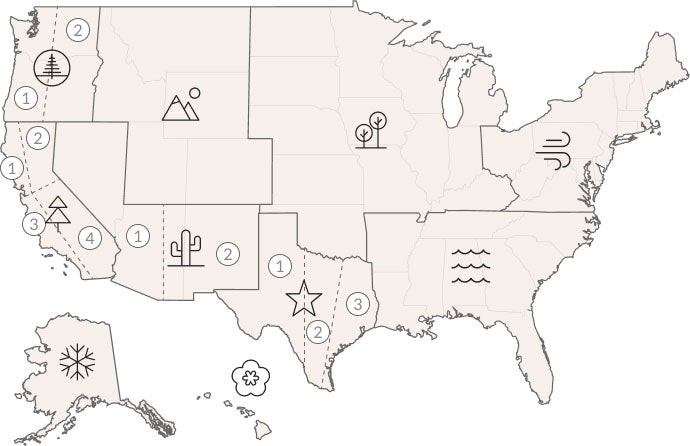AFFORDABLE FRENCH LUXURY. UTILIZING A CLIMATE-SPECIFIC APPROACH TO LOCAL SKIN HYDRATION AND REJUVENATION.
We Know Why Your Skincare Hasn't Worked. Do You?
It hasn't worked because it wasn't tailored to your local climate and its seasonal changes. Tap your local region to learn more.

We Know Why Your Skincare Hasn't Worked, Do You?
It hasn't worked because it wasn't tailored to your local climate and its seasonal changes. Tap your local region to learn more.
Unlike any brand you've tried
Better Results: It's All About Your Local Climate
To demonstrate her results, Pour Moi's founder Ulli Haslacher uses the Climate-Smart® Rotating System only on one hand and not the other.
"When I saw Ulli's hands in person I thought this is incredible and unlike anything I've ever seen - I've GOT to start using these products." - Elizabeth Ries, host of Twin Cities Live
HOW IT WORKS10 PATENTS. AWARD-Winning.
The Climate-Smart® Rotating System: Your Location
Youthful skin requires strategic care year-round where you live. Our daily 3-step system, science-backed and tailored to each season, allows you to adapt to changing conditions by rotating between appropriate weather-specific Day Creams, ensuring your skin remains at its best.

What’s included & how it works
Customized by season, each system includes four products to suit the local climate and weather.

This is Pour Moi
We are affordable French luxury skincare scientifically designed to be rotated in response to changes in your local climate.

Climate-Smart®
A science-based approach accounting for the local climate impact on skin and a formula's efficacy.

Tested & Proven
All Climate-Smart® formulas are rigorously tested in the actual natural climates.

Made in France
Pour Moi comes from one of the most beautiful & cleanest places in the world, the Rhône-Alpes.

Safe & Vegan
Our Regulatory Affairs team ensures safe use of proven botanical ingredients.

Less Packaging
We're committed to clean up the oceans & landfills. We want change and we’re starting with us.

Transparent
We believe transparent practices build trust and empower customers to make informed decisions
Smart recommendation tools
Find Your Local Climate-Smart Products
We offer two recommendation tools to assist you in finding the right products for exactly where you live.

More pending
10 Patents: Proving our Commitment to Innovation and Disruption
Our patents signify that our products are backed by cutting-edge research and development, ensuring you receive the best and most distinctive skincare solutions available.















